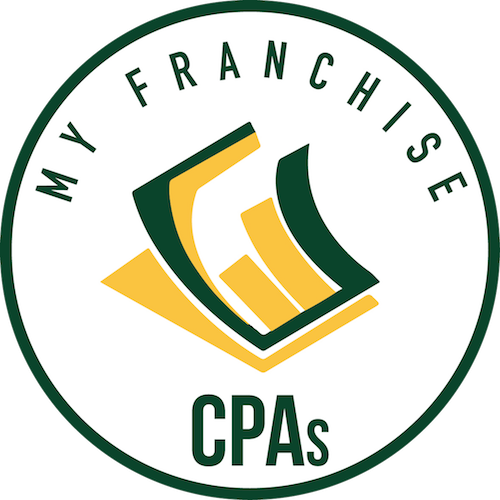
How to Pay Yourself as a Small Business Owner (LLC, S-Corp, C-Corp)
Every small business owner needs to calculate how much to pay themselves out of their business. Without a boss to write a paycheck, what should the owner be paying themselves? How much should be set aside for taxes, for savings, and for retirement?
While considering factors such as the structure of your business, the financial viability of your business, your long-term business goals, your company’s growth, and a few other simple metrics, any business owner can determine the amount that they may pay themselves.
Salary Vs. Owner’s Draw
Business owners have two basic options for paying themselves. They may set themselves a fixed salary, or they may draw from their business accounts as needed. Of course, there are pros and cons to each of these methods, not to mention the confines set by the IRS determining which method is viable.
Setting oneself a salary simply means the business owner takes a certain wage per chosen pay period (weekly, bi-weekly, monthly, etc.). Salaried business owners have the advantage of not needing to worry about taxing their earning since the money they are paying themselves with has already been taxed. However, with a set amount being taken from the business at regular intervals, the owner must be careful not to overextend their company’s finances.
The second method of paying oneself is an owner’s draw. This option provides plenty of flexibility for the owner – should the business have a very good month, the owner may elect to withdraw more funds for personal expenses or to put these profits back into the company. It is, however, necessary for taxes to be withheld from funds taken in this fashion. Taking funds this way will also lower the equity in the business.
How to Pay Yourself as an LLC, S-Corporation, C-Corporation and/or a Business Owned by a Sole Proprietor
How a business is classified is the number one factor to consider while paying oneself. Is your business an LLC (Limited Liability Company), an S-Corporation, or a C-Corporation? This information is necessary before calculating your salary, or budget for owner withdrawals. Regardless of the type of business being run, owners must consider many factors. Tax repercussions can be a serious consideration if owners are not careful enough to set money aside. It is also important to weigh the importance of realistically how much can be taken to pay the owner. Read on, for an in-depth look at the different types of organizational structures of small businesses, and an equation that can be used to be sure that these common problems are avoided.
How to Pay Yourself As an LLC
An LLC differs from different types of organizations, regardless of the number of owners, in that they have limited liability – LLCs have a certain amount of protection against losses. An LLC can be subcategorized as a single-member LLC and a multi-member LLC, depending on how many owners there are for the company. In either case, owners typically draw from their businesses, rather than setting a salary. Because of this, owners need to withhold their own taxes.
How to Pay Yourself as an S-Corporation
An S-Corporation can be an LLC, and simply means that they are a pass-through taxation entity. Business owners of S-Corps generally pay themselves a salary, but they may also pay themselves through distributions within the corporation. This money has already been taxed, but owners need to pay attention to be sure their business has enough equity to support such withdrawals.
How to Pay Yourself as a C-Corporation
A C-Corporation differs from an S-Corporation on the tax level only. C-Corps enjoy more protection from losses from the government, but they are double-taxed. Like S-Corps, C-Corp owners generally pay themselves a salary.
How to Pay Yourself as the Sole Proprietor of a Corporation
This type of organizational structure is used to define a corporation that has one sole owner, that does not meet tax requirements as a C or S Corp. As a sole proprietor, the owner pays themselves by drawing from the company. This way, the owner may receive all of the profits, have lots of flexibility, but they are also 100% responsible for losses.
Small Business Owner Salary Calculator
Next, we will take a look at actual numbers. Documents and information that should be on hand for these calculations – a profit and loss report, any and all debt payments and their schedule, and a business savings plan (this can be generated during this process, so do not worry if there isn’t a specific plan laid out for your business’s savings).
First, the business’s monthly net income needs to be calculated. On your profit and loss report, find the gross revenue from the month, subtract expenses, and what is left is the net income.
Next, calculate taxes to be set aside. Should this information not already be on hand, a safe percentage to cover taxes is 30% of net income. Subtract this from the monthly net income.
Next, add up all business debt payments. These are to be subtracted from the monthly net income (adjusted for taxes).
Finally, consider a savings plan for the company. Ideally, there will be a portion of each month’s revenue that will go back into the business. This can look like staffing and training, purchasing supplies, advertising, and much more. Remember, it is always safer to be conservative when determining these dollar amounts.
The amount leftover that is available for business owners to pay themselves, or to draw from, is calculated using this equation:
(0.7 x (Gross monthly income – Expenses)) – (Business debt payments + Monthly savings goal)
(Multiply the net income by 0.7 to yield net income – 30% set aside for taxes).
Hopefully, this equation will yield a positive number, that will also cover the owner’s expenses.
The numbers may be adjusted as necessary to obtain this perfect balance – except for taxes withheld. Remember, be realistic about how much is needed to pay oneself. Taking too much will be detrimental and the losses will be felt in some areas of business.
Conclusion
Running a company is rewarding in many ways, and that should include financial! As a business owner, use this guide to calculate a comfortable and realistic salary. Remember, this number is not arbitrary and should be carefully considered. The structure of your company, growth, and success of the company itself, and allocating funds for taxes, savings, and bills will all go into this equation.
If we’ve already helped you we would love a Google review!






